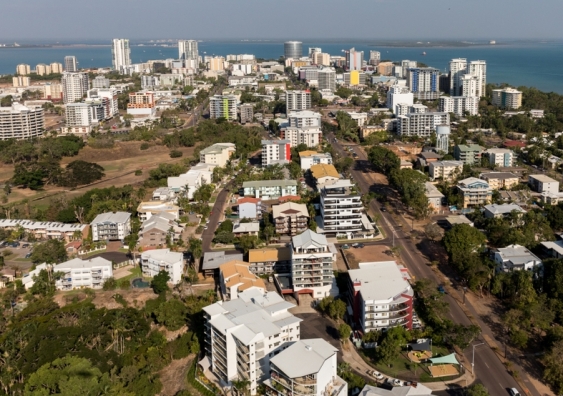Mat Santamouris recognised for lifetime contribution to sustainable architecture
2024-07-04T13:56:00+10:00

UNSW's Professor Mat Santamouris is a world-leading researcher in sustainable architecture.
UNSW Sydney
The UNSW Professor is honoured for his innovative heat mitigation technologies and strategies for cities.
Scientia Professor Mat Santamouris has been awarded the prestigious 2024 PLEA Lifetime Award for āoutstanding achievement in advancing the fields of architecture, urban planning, sustainability and resilienceā.
The Anita Lawrence Professor of High Performance Architecture at UNSW Sydney received the award at the (Re)thinking Resilience PLEA 2024 Conference held in Poland.
PLEA (Passive and Low Energy Architecture) is the leading international organisation for the development of sustainable architecture and urban design.
UNSW Vice-Chancellor and President Professor Attila BrungsĀ says, āProfessor Santamouris has an impressive record of research in heat mitigation. He has been innovative and persistent in his efforts, and his research is making an impact.
"We are proud to have someone of his calibre at UNSW and I congratulate him on his well-deserved PLEA Lifetime Achievement Award.ā
Professor Claire Annesley, Dean of UNSWās Faculty of Arts, Design & Architecture, said, āI congratulate Professor Santamouris on his award in recognition of his contribution to research in sustainable architecture.
āHe is one of the most cited researchers in his field and is making a powerful impact on approaches to cooling cities in the face of climate change.ā
Extreme urban heat is the most documented climate change phenomenon and affects more than 450 cities worldwide, increasing energy consumption needs and adversely impacting health, including heat-related illness and death.
Prof. Santamouris said he and his colleagues had been working for more than 30 years to develop advanced technologies aiming to mitigate urban heat, decrease the energy and environmental impact of cities, protect low-income populations and improve the urban environmental quality.
āI feel proud, flattered and very emotional to receive this award from such a prestigious international organisation,ā said Prof. Santamouris. āTo have the work recognised in this way, at the very highest level, is very special.
āI will continue my efforts and the scientific work to develop more efficient mitigation technologies to counterbalance the impact of urban overheating. The tremendous human penalty paid recently in Mecca, Pakistan and India is extremely alarming and determines our scientific and human duty to be more efficient and more helpful.ā
Mitigating heat in cities
Extreme urban heat is the most documented climate change phenomenon and affects more than 450 cities worldwide, increasing energy consumption needs and adversely impacting health, including heat-related illness and death.Ā
Prof. Santamouris has undertaken large-scale mitigation projects around the world, including in Sydney and Darwin. Earlier this year, he published a study in , detailing a multi-faceted strategy to cool Riyadh, Saudia Arabiaās capital, by up toĀ 4.5Ā°C.
His work includes developing thermochromic materials such as paint that changes colour with the temperature to keep places cool in summer and warm in winter; nanotechnology that gives surfaces a much lower temperature than the ambient temperature; and ultra-reflective photonic materials that absorb less heat.
He has also developed new intelligent building materials that can change the amount of heat they reflect and emit in response to air temperatures.Ā
Media enquiries
For enquiries about this story and interview requests please contactĀ Samantha Dunn, UNSW Sydney Division of Societal Impact, Equity & Engagement.
±Ź³ó“Ē²Ō±š:Ģż+61 2 9385 2864
·”³¾²¹¾±±ō:Ģżsamantha.dunn@unsw.edu.au







